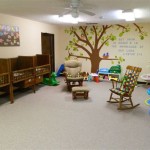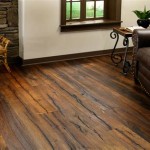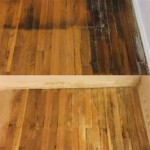Wooden Flooring Bedroom Design Ideas
Wooden flooring in bedrooms offers a blend of warmth, elegance, and durability, making it a popular choice for homeowners. Its versatility complements various interior design styles, from minimalist to rustic, and can significantly enhance the overall aesthetic appeal of a bedroom. Choosing the right type of wood, finish, and layout, however, requires careful consideration to achieve the desired look and functionality.
The selection of wooden flooring for a bedroom necessitates a focus on factors beyond mere aesthetics. Durability, maintenance requirements, and environmental impact are crucial aspects to evaluate. Different wood species possess varying levels of hardness and resistance to scratches and dents, influencing their suitability for bedrooms with varying levels of foot traffic. The finish applied to the wood further affects its protection and ease of cleaning.
Beyond the practical considerations, the choice of wooden flooring plays a significant role in defining the ambiance and style of the bedroom. Light-toned woods can create a spacious and airy feel, while darker tones impart a sense of warmth and intimacy. The grain pattern of the wood also contributes to the overall aesthetic, with pronounced grains adding character and subtle grains providing a more refined look. Furthermore, the layout of the wooden planks, such as herringbone or straight patterns, can visually alter the dimensions of the room and add visual interest.
Selecting the Right Wood Species
The species of wood chosen for bedroom flooring is a fundamental decision that directly impacts both the appearance and performance of the floor. Hardwood options like oak, maple, and walnut are renowned for their durability and timeless appeal. Oak is a particularly versatile choice, available in various colors and grain patterns, making it adaptable to diverse design styles. Maple offers a smoother, more uniform appearance and is typically lighter in color, creating a bright and airy atmosphere. Walnut, with its rich, dark tones and distinctive grain, adds a touch of luxury and sophistication.
For homeowners seeking more sustainable options, bamboo and engineered wood are viable alternatives. Bamboo is a rapidly renewable resource known for its strength and durability. It offers a unique aesthetic and can be stained to match various color schemes. Engineered wood consists of a thin layer of hardwood bonded to a core of plywood or fiberboard, making it more resistant to moisture and warping than solid hardwood. This makes it suitable for bedrooms with potential humidity fluctuations.
The hardness of the wood is a critical factor to consider, especially in high-traffic areas or bedrooms used by children or pets. The Janka hardness scale measures the resistance of wood to indentation. Woods with higher Janka ratings are more resistant to scratches and dents. This information is readily available and can assist in making an informed decision based on the expected wear and tear the flooring will endure.
Exploring Different Wood Flooring Finishes
The finish applied to wooden flooring serves not only to enhance its aesthetic appeal but also to protect it from wear and tear. Polyurethane is a popular choice due to its durability and resistance to scratches, stains, and water damage. It's available in various sheens, from matte to high-gloss, allowing homeowners to customize the look of their floors. Oil-based polyurethane tends to yellow over time, while water-based polyurethane is more environmentally friendly and retains its clarity.
Oil-based finishes, such as penetrating oil or wax, offer a more natural look and feel. They penetrate the wood fibers, enhancing the grain and providing a subtle sheen. Oil-based finishes require more frequent maintenance than polyurethane, as they are less resistant to scratches and water damage. However, they are easier to repair, as individual scratches can be spot-treated without refinishing the entire floor.
For a rustic or vintage aesthetic, distressed or hand-scraped finishes are often employed. These finishes create a textured surface with intentional imperfections, adding character and charm to the flooring. Wire-brushed finishes remove the soft grain from the wood, leaving a raised, textured surface that highlights the natural grain patterns. These types of finishes are particularly well-suited for bedrooms with a farmhouse or bohemian design.
Designing with Wood Flooring Layouts and Patterns
The layout and pattern of wooden flooring can significantly impact the visual perception of a bedroom, influencing its perceived size and style. A straight layout, where planks are installed parallel to the longest wall, is a classic and versatile choice that creates a sense of continuity and flow. This layout is suitable for bedrooms of various sizes and styles.
A diagonal layout, where planks are installed at a 45-degree angle to the walls, can visually expand the room and add a touch of sophistication. This layout works well in smaller bedrooms or those with irregular shapes. However, it requires more material and labor, as some planks will need to be cut at angles.
Herringbone and chevron patterns are more intricate layouts that add visual interest and a sense of elegance. Herringbone features rectangular planks arranged in a staggered zigzag pattern, while chevron has planks cut at an angle to create a continuous V-shape. These patterns are best suited for larger bedrooms, as they can appear overwhelming in smaller spaces. They also require more precise installation and can be more costly.
Beyond these traditional layouts, creative patterns such as borders, inlays, and medallions can be used to add a unique touch to the flooring. Borders can frame the perimeter of the room or highlight specific areas, while inlays and medallions can create focal points and add a decorative element. These custom options allow for personalized designs that reflect individual preferences.
The width of the wooden planks also influences the overall look of the flooring. Wider planks tend to create a more modern and spacious feel, while narrower planks offer a more traditional and formal look. The choice of plank width should be considered in relation to the size of the bedroom and the desired aesthetic.
When selecting a wood flooring layout, it's crucial to consider the direction of natural light. Installing planks parallel to the light source can enhance the wood's natural grain and create a brighter, more inviting space. Conversely, installing planks perpendicular to the light source can create shadows and add depth to the room.
The color of the wooden flooring should complement the overall color scheme of the bedroom. Light-toned woods, such as maple or birch, can create a bright and airy feel and are well-suited for bedrooms with limited natural light. Dark-toned woods, such as walnut or mahogany, can add warmth and intimacy and are ideal for larger bedrooms. Neutral-toned woods, such as oak or ash, are versatile and can be paired with a wide range of colors and styles.
Rugs can be strategically placed on top of wooden flooring to add warmth, texture, and visual interest. A large area rug can anchor the bed and define the sleeping area, while smaller rugs can be used to accent specific areas, such as a reading nook or a dressing area. The color and pattern of the rug should complement the wooden flooring and the overall décor of the bedroom.
The use of underfloor heating can enhance the comfort of wooden flooring, particularly in colder climates. Underfloor heating provides a gentle and even heat distribution, creating a warm and inviting atmosphere. It's important to choose a wooden flooring that is compatible with underfloor heating systems, as some woods can expand or contract with temperature fluctuations. Engineered wood is often a preferred choice for underfloor heating due to its stability.
Proper maintenance is essential to preserve the beauty and longevity of wooden flooring. Regular sweeping or vacuuming can remove dust and debris, preventing scratches and dulling of the finish. Spills should be cleaned up immediately to prevent staining. The use of appropriate cleaning products specifically designed for wooden flooring is crucial to avoid damaging the finish. Avoid using harsh chemicals or abrasive cleaners, as these can strip the protective coating and damage the wood.
Periodic refinishing may be necessary to restore the luster of wooden flooring that has become scratched or worn. Refinishing involves sanding down the old finish and applying a new coat of sealant. The frequency of refinishing depends on the type of wood, the finish, and the level of foot traffic. With proper care and maintenance, wooden flooring can provide years of beauty and enjoyment in a bedroom.

Transform Your Home With Wooden Floor Bedroom Ideas Resand Co

Bedroom Wooden Flooring Designs For Your Home Design Cafe

Choosing Wood Floors For A Bedroom Tarkett

Master Bedroom Flooring Ideas Reallyfloors America S Est Hardwood

Elevate Your Bedroom Design With Elegant Wooden Flooring
What Is The Best Flooring For Bedrooms Tarkett

32 Master Bedrooms With Hardwood Floors

Charming Wooden Floor Designs For Updating Your Bedroom Interior Beautiful Homes

8 Bedroom Remodel Ideas Firea Stone

Charming Wooden Floor Designs For Updating Your Bedroom Interior Beautiful Homes
Related Posts








